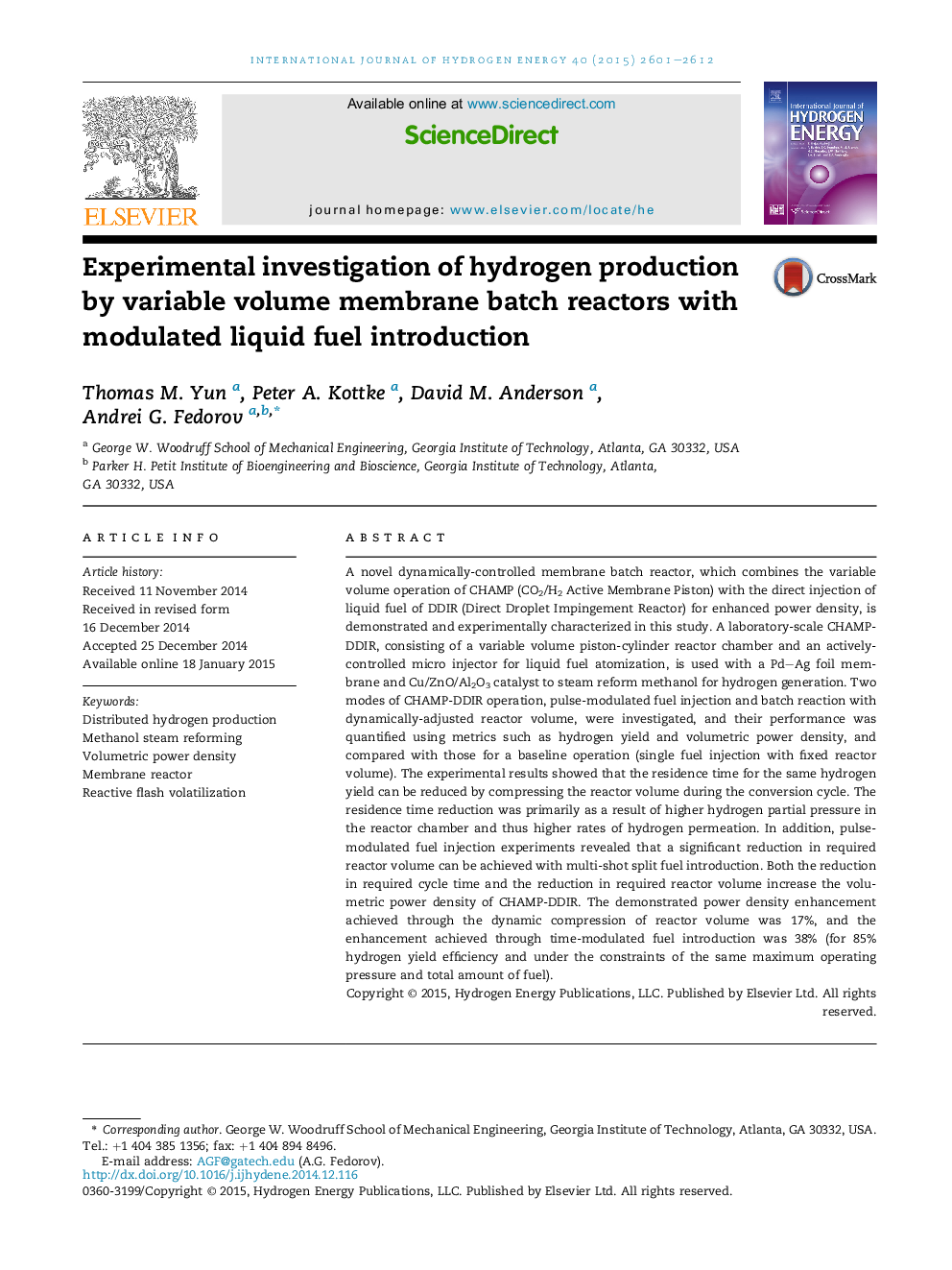| کد مقاله | کد نشریه | سال انتشار | مقاله انگلیسی | نسخه تمام متن |
|---|---|---|---|---|
| 1270024 | 1497467 | 2015 | 12 صفحه PDF | دانلود رایگان |
• Direct injection of liquid fuel is combined with variable volume membrane batch reactor.
• Hydrogen production via methanol steam reforming is demonstrated in the hybrid reactor.
• Enhanced hydrogen permeation is achieved by dynamic compression of reactor volume.
• Reduction in required reactor volume is achieved with multi-shot split fuel introduction.
• Volumetric power density of reactor is enhanced by dynamic volume compression and fuel injection modulation.
A novel dynamically-controlled membrane batch reactor, which combines the variable volume operation of CHAMP (CO2/H2 Active Membrane Piston) with the direct injection of liquid fuel of DDIR (Direct Droplet Impingement Reactor) for enhanced power density, is demonstrated and experimentally characterized in this study. A laboratory-scale CHAMP-DDIR, consisting of a variable volume piston-cylinder reactor chamber and an actively-controlled micro injector for liquid fuel atomization, is used with a Pd–Ag foil membrane and Cu/ZnO/Al2O3 catalyst to steam reform methanol for hydrogen generation. Two modes of CHAMP-DDIR operation, pulse-modulated fuel injection and batch reaction with dynamically-adjusted reactor volume, were investigated, and their performance was quantified using metrics such as hydrogen yield and volumetric power density, and compared with those for a baseline operation (single fuel injection with fixed reactor volume). The experimental results showed that the residence time for the same hydrogen yield can be reduced by compressing the reactor volume during the conversion cycle. The residence time reduction was primarily as a result of higher hydrogen partial pressure in the reactor chamber and thus higher rates of hydrogen permeation. In addition, pulse-modulated fuel injection experiments revealed that a significant reduction in required reactor volume can be achieved with multi-shot split fuel introduction. Both the reduction in required cycle time and the reduction in required reactor volume increase the volumetric power density of CHAMP-DDIR. The demonstrated power density enhancement achieved through the dynamic compression of reactor volume was 17%, and the enhancement achieved through time-modulated fuel introduction was 38% (for 85% hydrogen yield efficiency and under the constraints of the same maximum operating pressure and total amount of fuel).
Journal: International Journal of Hydrogen Energy - Volume 40, Issue 6, 19 February 2015, Pages 2601–2612
